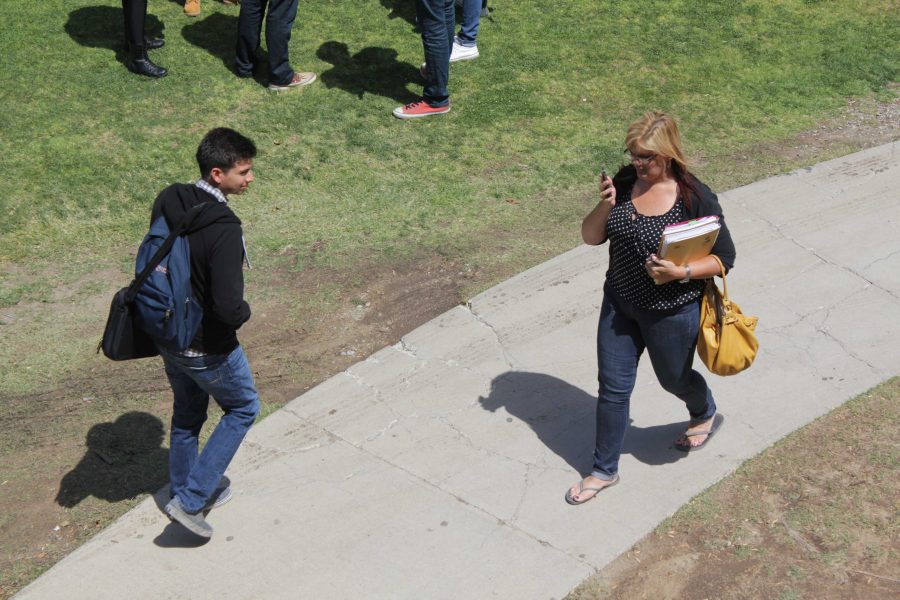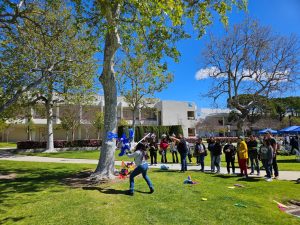Students are trading relationships for their phones
Students walk across campus glued to their phones.
May 8, 2014
Moorpark College has more to offer students than a degree, sports experience, or the opportunity to eat from a vending machine. Some of the most valuable takeaways from our college experience are the long-lasting interpersonal connections that students form during their time here.
Whether it’s the girl who continually makes appearances a class each semester, or a friendly stranger that engages their fellow students in small talk before a counselor appointment, the connections I’ve forged with my peers feed into the college experience that many of us optimistically crave.
As I am coming to the completion of my community college career, I am continually finding myself surrounded by 20-somethings glued to their cellphone screens, smiling at their digital conversations, instead of at their fellow classmates passing them on Raider Walk.
Obvious factors like the millennial generation’s abiding fascination with social media and constant self-promotion through platforms like Twitter, Facebook, and Instagram, offer students intriguing alternatives to human interaction. As this cultural phenomenon continues to holds its prominence in our lives, one would conclude that the number of users still constantly checking these sites would begin to plateau. After the honeymoon phase with these platforms ends, users become less enthralled with their services.
On the contrary, Pew Research reported for 2013 that “63% of Facebook users report going on the site at least daily [with 40% logging on multiple times per day], giving it not only the highest overall percentage of [social media] users, but also the most engaged.”
Instagram is a close runner-up, Pew added, “More than half of Instagram users (57%) use the app on a daily basis, with 35% doing so several times per day.”
How do we stop the habitual check for notifications and new posts on our timelines? For many of us, the effect of our attraction to these devices must be addressed in order to fully illuminate what we are missing out on. Interpersonal Communications professor, Jill McCall explains that our dedication to our mobile conversations may be preventing an opportunity to introduce new people into our lives.
“Students are running across campus and texting, interacting with… peers [on their phones],” McCall said. “So I think if we are so consumed by cultivating and maintaining our online relationships and that online social group, it doesn’t allow for that sort of happenstance that is so wonderful about life and about meeting new people.”
Desperate for change, I have dedicated my last semester to zipping the phone away in my backpack pocket, and have forced myself to embrace my surroundings face-to-face. The increased interactions with familiar faces from past classes and even a quick exchange with former professors has reintroduced me to the Moorpark community in a more favorable light than I expected.
A collective effort on both ends is necessary to continue the chain reaction in which students encounter unpredictable experiences with other students. The visual aid linking us to cyberspace has to be limited in usage for the sanctity of communication between individuals to be salvaged.
“When you’re taking a bus some place or walking across campus, sure maybe you’re having to send some really important text message, but most of the time I feel like we use that social connection as a filler, because we don’t have to strike up a conversation with someone we don’t know,” McCall said.
Cutting back on social media during school hours to actually socialize with your peers will encourage direct networking, opposed to technological dependence for connections.
Venturing into unfamiliar interactions with those around us may produce a fear of the unknown, but it is a rewarding surprise to meet compelling individuals that make it worth the risk.






